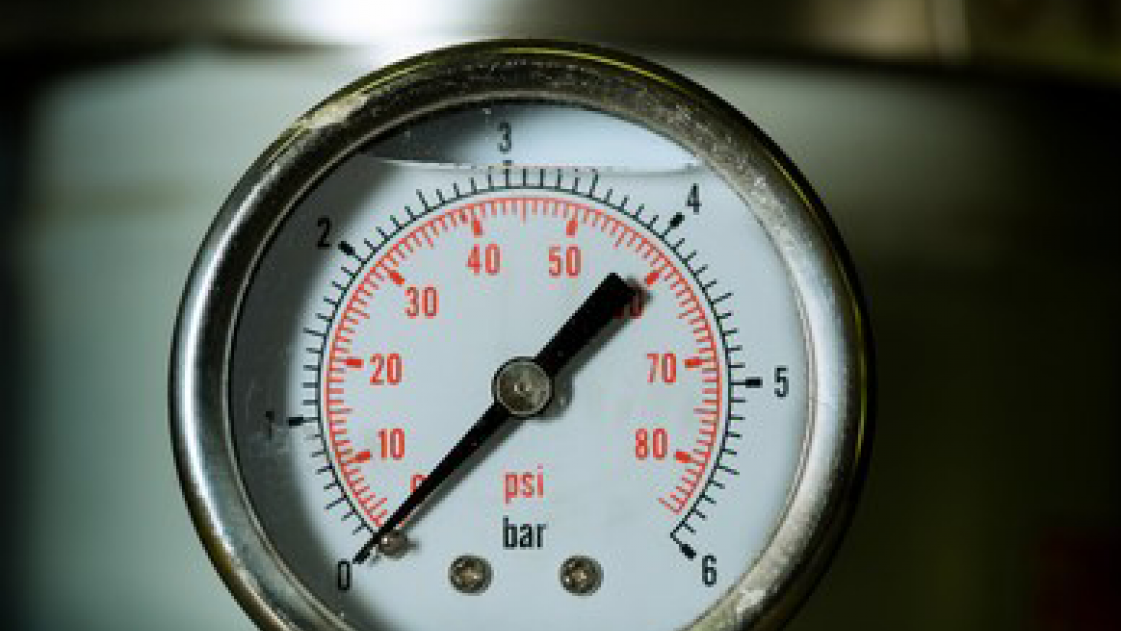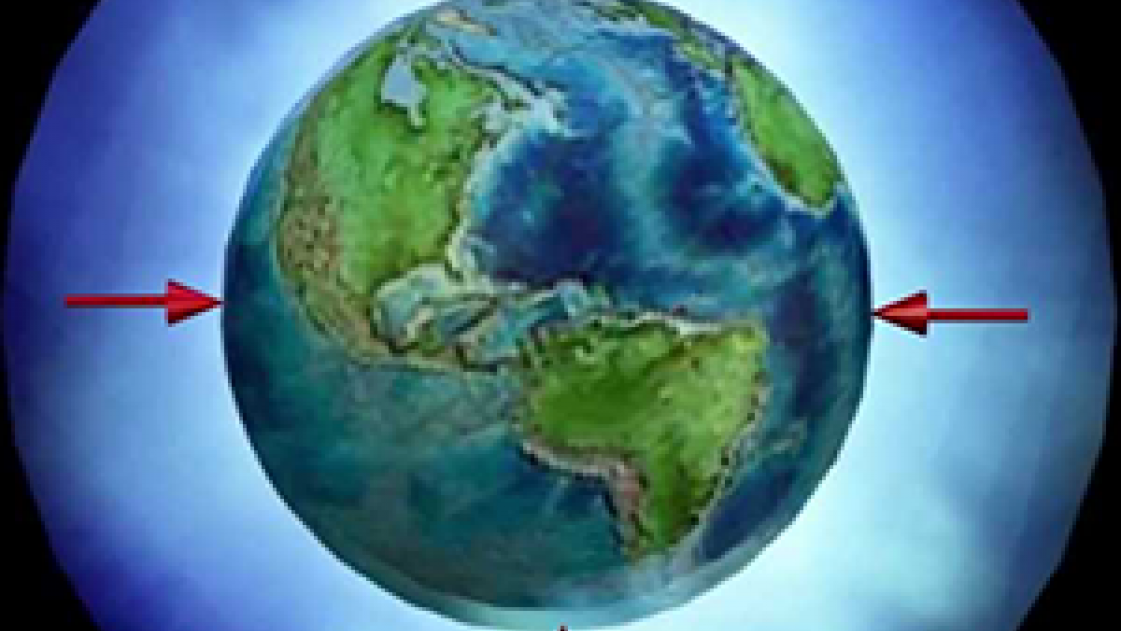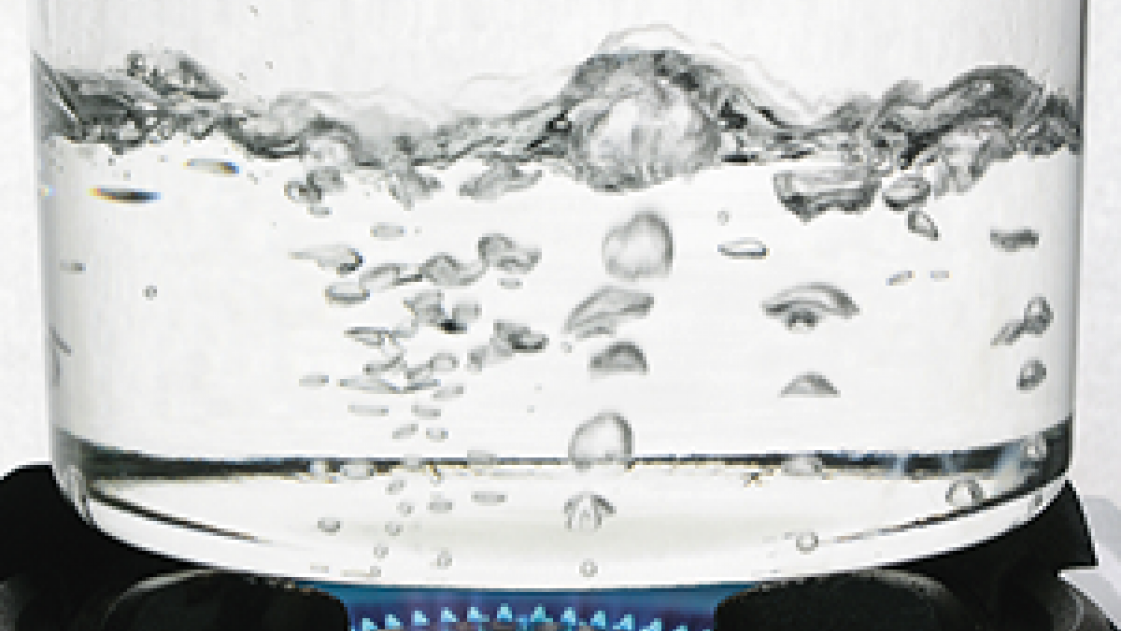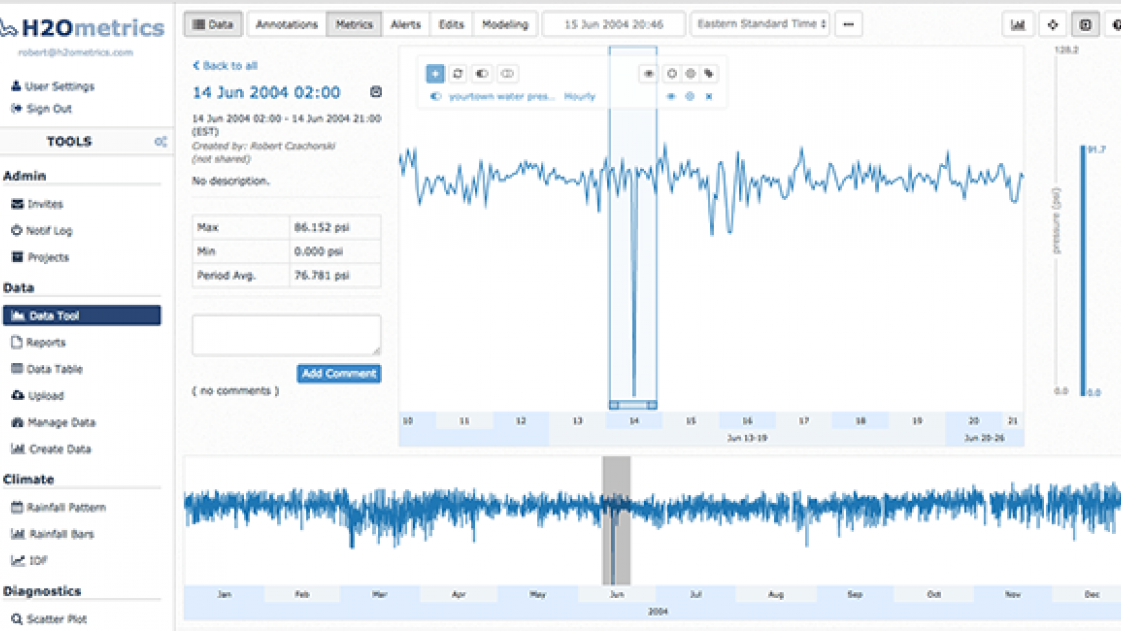What is Pressure? A Water Resources Pro Breaks it Down
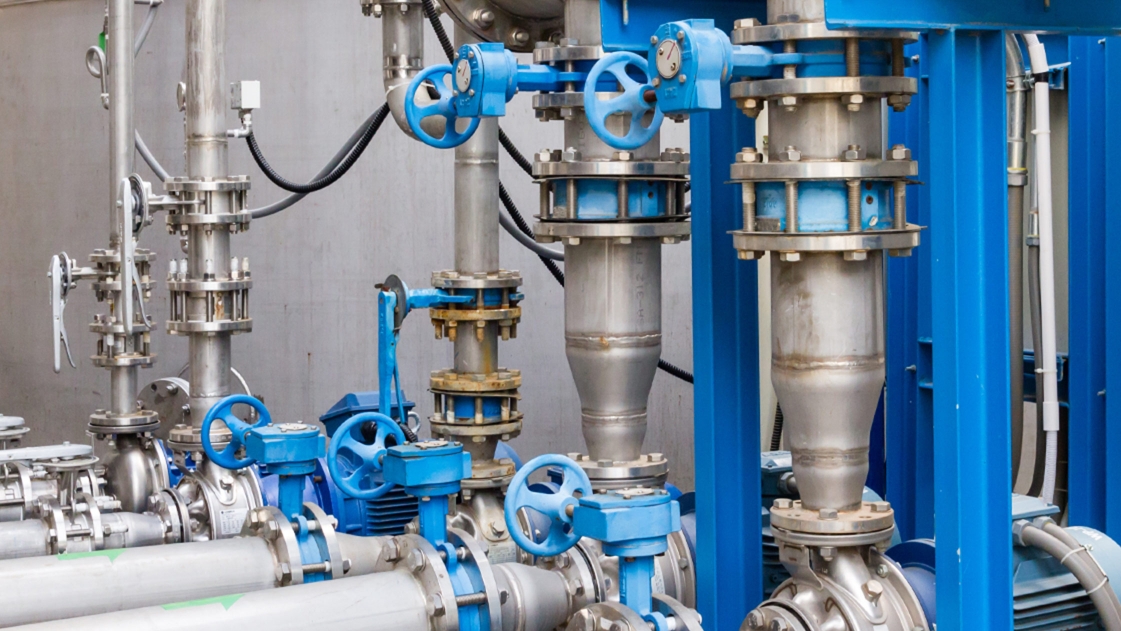
What is pressure? For those in the water resources field, it’s obvious from everyday work and experience. But there are some nuances and details about pressure that are important to understand. We’ll take you on an educational journey to understand water pressure as thoroughly as our pros.
Here we will cover the basic concepts of pressure, including some simple ways to understand pressure and the various units of pressure. We’ll also cover some more complicated concepts like absolute pressure, gauge pressure, negative pressure, and vapor pressure. Finally, we’ll conclude with a fun (we hope!) brain teaser.
Basic Concepts of Pressure
Simply put, pressure is the amount of force exerted per unit of area. The general definition from Wikipedia is the “force applied perpendicular to the surface of an object per unit area over which that force is distributed.” Here is a simple explanation of the general concept of pressure: In fluid mechanics, pressure is exerted in all directions and exists at all points in the fluid, because of the nature of fluids. The molecules in a fluid are in constant motion in all directions.
Pressure in Fluids
Pressure in fluids is a function of the depth of the fluid, the density of the fluid, and acceleration due to gravity. Pressure has units of force per unit of area.
In the English system, that means units like pounds per square inch (psi). In the metric system and SI units, that means newtons per square meter, also known as a Pascal. A newton is the unit of force in the metric system; similar to how a pound is a unit of force in the English system.
Calculating Water Pressure
The units of pressure make it easy to conceptualize pressure in a water column. Imagine that we wanted to know the pressure at a depth of 1 foot under water. To compute the pressure, we simply need to determine the force (weight) of water acting on a unit of area (one square inch) at the bottom. Water has a density of 62.4 pounds per cubic feet. That means if we had a cube of water with a volume of one cubic foot, the water would have a weight of 62.4 pounds. The bottom surface area of that cube of water is 12 inches x 12 inches = 144 square inches. Therefore, the pressure at the bottom of the cube of water is 62.4 pounds / 144 square inches = 0.433 pounds per square inch (psi).
Because pressure acts in all directions, we don’t need an exact shape of a cube to exert 0.433 psi of pressure—any shape or volume of water at a depth of 1 foot will exude 0.433 psi at the bottom, as outlined here. This calculation shows the basis for the conversion factors between depth of water and pressure: 1 foot of water depth = 0.433 psi, or 1 psi = 2.307 feet of water depth.
Absolute vs. Gauge Pressure
When most of us think of pressure, we’re thinking of gauge pressure. Gauge pressure is a reference pressure (relative to atmospheric pressure) that is used as a matter of convenience, because we are constantly operating under ambient atmospheric conditions.
Absolute pressure is the pressure relative to a complete vacuum. Outer space, though not a complete vacuum, is a good place to imagine where the pressure would be close to absolute zero pressure and where it makes sense to measure pressures on an absolute scale.
Wikipedia has a thorough definition of these terms:
- Absolute pressure is zero-referenced against a perfect vacuum, using an absolute scale, so it is equal to gauge pressure plus atmospheric pressure.
- Gauge pressure is zero-referenced against ambient air pressure, so it is equal to absolute pressure minus atmospheric pressure.
Gauge pressure is obviously the pressure that we measure when we put a pressure gauge in the fluid. Hence its name. This is the case because the units on the scale of the gauge have been calibrated to depict the pressure relative to atmospheric pressure. In the above example where we computed the pressure at the bottom of 1 foot of water, the pressure we computed of 0.433 psi was a gauge pressure.
Sometimes a lower-case “g” is added to the units to indicate that it is gauge pressure, such as 0.433 psig. You may see this on natural gas plans that contain labels for the pressure in the pipe, like “100 psig”, for example.
Atmospheric Pressure
Atmospheric pressure varies slightly depending on the weather and your elevation, but is generally around 14.7 pounds per square inch (psi) at sea level. That means that we could think of atmospheric pressure as the weight (force) of the air standing above us in a column with a cross sectional area of one square inch. That column of air would start at the ground and extend all the way into space and would contain air that weighs 14.7 pounds. In the above example, the gauge pressure was 0.433 psi and the absolute pressure is 0.433 psi (gauge) + 14.7 psi (atmospheric) = 15.133 psi.
Sometimes you may come across a unit of pressure called an “atmosphere.” One atmosphere is equal to 14.7 psi, or the typical atmospheric pressure at sea level. This unit of measure is also known as reference or standard pressure, and is commonly used in applications like scuba diving. For example, a pressure of 3 atmosphere is simply a pressure that is 3 times atmospheric pressure, or 14.7 psi x 3 = 44.1 psi.
Most people would not have a good intuitive understanding of this pressure if you told them they would be scuba diving to a pressure of 44.1 psi, but a pressure of 3 atmospheres is much easier to understand. It’s also interesting to note that one atmosphere is equal to about 34 feet of water. (14.7 psi x 2.307 feet/psi.) That means that as you dive, pressure increases by one atmosphere for every 34 feet of depth you go down.
Negative Pressure
Following the definitions above of absolute pressure and gauge pressure, it should become apparent that there is actually no such thing as “negative pressure” on an absolute basis. The lowest absolute pressure we could measure is zero in a total vacuum. However, on a gauge pressure scale, it is possible to measure a negative pressure.
It is important to keep in mind that this is not an actual negative pressure; rather, it is a negative pressure relative to atmospheric pressure. For example, a gauge pressure of -1 psi really indicates that the pressure is one psi below atmospheric pressure—which would be 13.7 psi of absolute pressure. Negative gauge pressures are sometimes called vacuum pressures, because they have the impact of creating a vacuum relative to the atmosphere. Note that the lowest negative gauge pressure that could be measured is -14.7 psi, because at that point, we have reached a total vacuum at zero absolute pressure and can go no lower.
Vapor Pressure
Vapor pressure is the pressure at which a fluid becomes a vapor at a certain temperature. It may seem strange to think about, but the vapor pressure (boiling point) of water varies, depending on the temperature. For example, we all know that water boils at 212 degrees F. It could then be said that the vapor pressure of water at 212 degrees Fahrenheit is 14.7 psi (atmospheric pressure, absolute scale).
At 70 degrees F, the vapor pressure of water is about 0.2 psi (absolute pressure.) This means that we could boil water at room temperature by reducing the pressure to an absolute pressure of 0.2 psi (gauge pressure of -14.5 psi).
Boiling water at 70 degrees F may seem crazy, but in fact you probably do it all the time! When you turn on your kitchen faucet or hose spigot to a trickle of flow, you may have noticed that there is an audible sound coming from the faucet that sounds like a high pitched vibration.
That sound is actually the result of water boiling as it passes through the valve, and the vapor bubbles collapsing as they make their way past the valve. This occurs due to the Bernoulli effect, which states that an increase in the speed of a fluid occurs simultaneously with a decrease in pressure. The valve restricts the flow by reducing the cross sectional area through the valve, which results in an increase in velocity as the water passes through the valve. When the velocity increase is sufficient, the pressure will drop enough to reach the vapor pressure of water. After the water passes through the valve, the velocity and pressure return to normal, causing the vapor bubbles that formed to collapse. It is the sound of that collapse that you can hear.
Vapor pressure can occur in valves and pumps installed within a water or sewer system from the same effect. When this occurs, the collapsing of the bubbles can be violent, and cause erosion of the metal parts of the valve and pump impeller through a process called cavitation. The erosion of these parts can reduce their effectiveness or even cause total system failure. That is why it is important to monitor the operations of your equipment (flows and pressures) to make sure does not happen.
Now the Fun Part: What is the Tallest Possible Straw?
Let’s close out this informative post with a little fun. Let’s imagine the tallest possible straw that you could use for a drink. No, this is not a trick question. You should be able to figure it out from the information in this post. Let’s walk through it.
First, think through the pressure and flow conditions that exist when we use a straw. When using a straw, you create a vacuum pressure in your mouth to induce the fluid to flow up the straw. The water in the straw is flowing from a higher pressure condition in the cup to a lower pressure condition in your mouth.
The pressure available in the cup to push the water up the straw is atmospheric – or 14.7 psi absolute pressure. By creating a vacuum in your mouth to, say, a gauge pressure of -1 psi (13.7 psi absolute pressure), you induce a pressure differential that causes the water to flow from high pressure (the cup) to the low pressure (your mouth).
With that basic understanding of the flow and pressure dynamics of a straw, we can now compute the tallest straw possible. The vapor pressure of water at room temperature is 0.2 psi absolute pressure (or -14.5 gauge pressure). That means if you could create that strong of a vacuum with your mouth, water at the top of the straw would reach vapor pressure and boil away just as you were about the drink it. So the lowest suction pressure you can possible create at the top of the straw is -14.5 psi.
Let’s convert this pressure into a depth of water: -14.5 psi x 2.307 feet/psi = – 33.45 feet. That means if we had a straw that was 33.45 feet tall, and we created a vacuum of -14.5 psi gauge pressure at the top of the straw, the pressure in the cup would be 14.7 psi (absolute), and the pressure at the top of the straw would be 0.2 psi (absolute), which is the vapor pressure of water. We could go no higher than this with a straw, even with the world’s strongest pumps doing the sucking, because the water would vaporize right when it got to the top.
You might then wonder how we draw water out of the ground—certainly there are many wells that are deeper than 33.45 feet, right? Correct. But they don’t extract the water from the ground by sucking it out at the top like a straw. In order to pump the water out of the ground, they place the pump (or the pump impeller) at the bottom of the well, so that the pump is not sucking the water up. Instead, it is pushing the water up. The discharge side of the pump creates a very high pressure, and that pressure causes the water to flow from the high pressure location past the pump to the low pressure condition at the surface, essentially pushing the water up the well.
Pressure and H2Ometrics
At OHM Advisors, we take water modeling seriously. So seriously that the firm invested in H2Ometrics, a cloud-based software company that creates smart water and sewer systems by utilizing time-series measurements from existing data sources like metering, telemetry, and SCADA. H2Ometrics provides visualizations, metrics, and alerts to continuously monitor pressure or depth from any pressure sensor. Using a tool like H2Ometrics can help you determine when your pressures are doing something that is unusual or different than before, which can help diagnose an issue before it becomes a big problem.
Things like water main breaks, cavitation wearing pump impellers, or electrical supply issues can all be detected and diagnosed by constantly monitoring your pressure and flow data. H2Ometrics does the heavy lifting for you by providing tools that make it fast and easy to generate actionable output from your data.
Questions? Intrigued to Learn More?
We’re here to help! Contact our H2Ometrics expert today with your burning questions.
